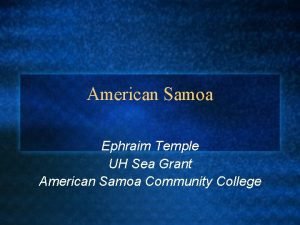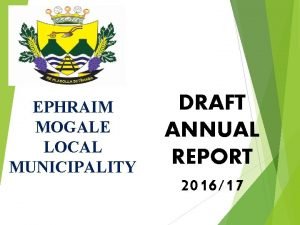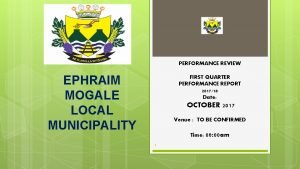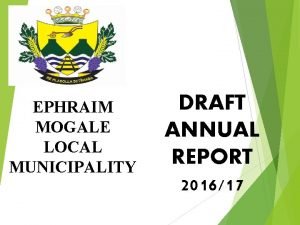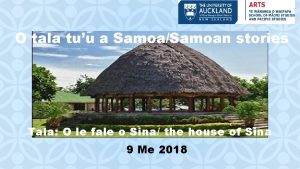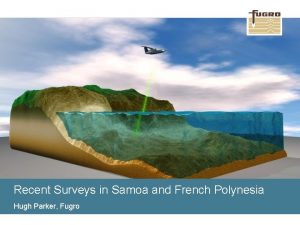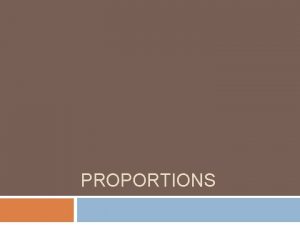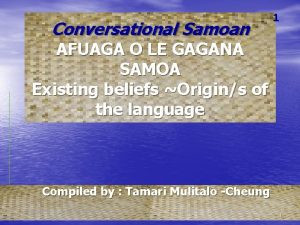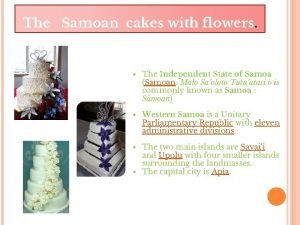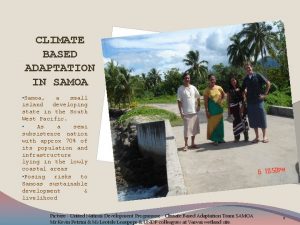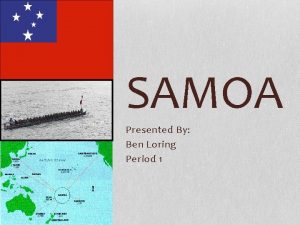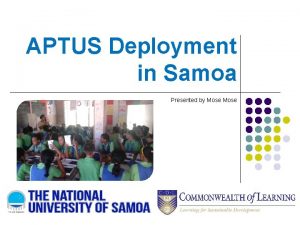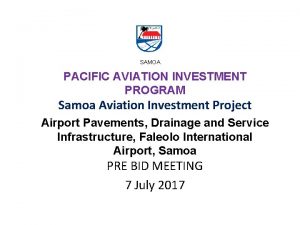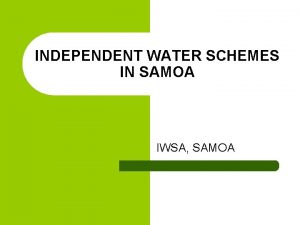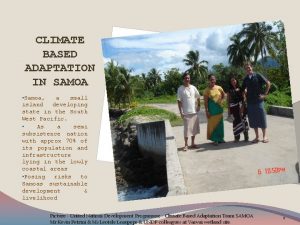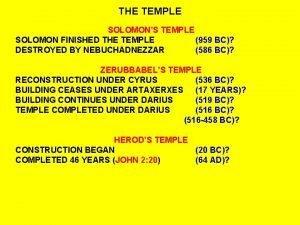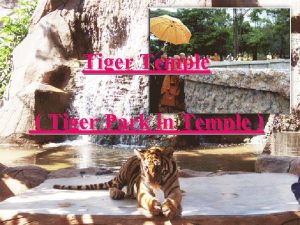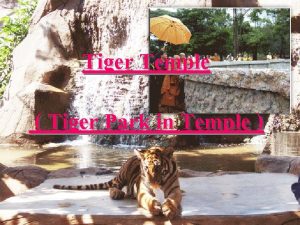American Samoa Ephraim Temple UH Sea Grant American












- Slides: 12

American Samoa Ephraim Temple UH Sea Grant American Samoa Community College

Background 62, 000 people as of 2005 Land areas of 197 km 2 Ocean area (EEZ) of 426, 405 km 2 5 volcanic islands and 2 coral atolls GDP=$510 million ($5, 800 per capita) 93% Pacific Islander, 3% Asian, 1% White, 3% Other 90% of land communally owned, economy relies heavily on US trade, grants, and jobs. Tuna canneries are bulk of the private sector l Unincorporated territory of the U. S. since 1900 l l l l



Tutuila

Insert relevant photo of your location

Insert relevant photo of your location

Major Environmental Issues l l l l What is the current state of the environment? Declining near-shore fisheries Impact of population growth on environment Impact of environment on human population Climate change Nitrogen loading Fossil Fuels for energy

Data Collection l National Oceanic and Atmospheric Administration collects air temperature, wind speed and direction, dominant swell height, tides, barometric pressure, rainfall, sea surface temperature and atmospheric CO 2 n Data are collected by one buoy about 1 mile offshore, one station in Tafuna near the airport, and the CO 2 monitoring station in Tula n l US and AS EPA n Water quality of river and stream runoff

Data Collection l AS Department of Marine and Wildlife Resources Monitor coral reef health Monitor near shore and offshore fish populations Assess impact of marine protected areas on human and marine populations n Monitor human response to changes in ocean conditions n n n l US National Park Service n n Monitor coral reef health Gauge interactions between terrestrial and marine habitats

Research Needs l What is the current state of the environment? Ocean currents and current flow modeling, more accurate wave energy data n marine resources of and biological impact of submerged barrier islands and growing island Vailulu’u n l Declining near-shore fisheries relationship between hydrodynamics and larval connectivity n location of important sources and sinks for marine larvae n impact of MPA’s on reef populations n l Impact of environment on human population n Tsunami inundation and flood zone mapping

Research Needs l Impact of population growth on environment toxicity of fish beyond Pago Harbor n impact of ballast water on native species n l Climate change n l Nitrogen loading n l trends in reef ecosystems in relationship to global warming effect of traditional waste management practices on nearshore communities Fossil Fuels for energy n oceanic renewable energy resources
 Ephraim temple
Ephraim temple Ephraim mogale local municipality villages
Ephraim mogale local municipality villages Ephraim mogale bursary
Ephraim mogale bursary Ephraim mogale local municipality councillors
Ephraim mogale local municipality councillors Judges of israel
Judges of israel Tala tuu o nuu o samoa
Tala tuu o nuu o samoa Samoa island
Samoa island Muagagana faasamoa
Muagagana faasamoa An equation that shows that two ratios are equal
An equation that shows that two ratios are equal Afuaga ole gagana samoa
Afuaga ole gagana samoa Samoan cakes
Samoan cakes Yellow sea and east china sea
Yellow sea and east china sea Coral phylum
Coral phylum
